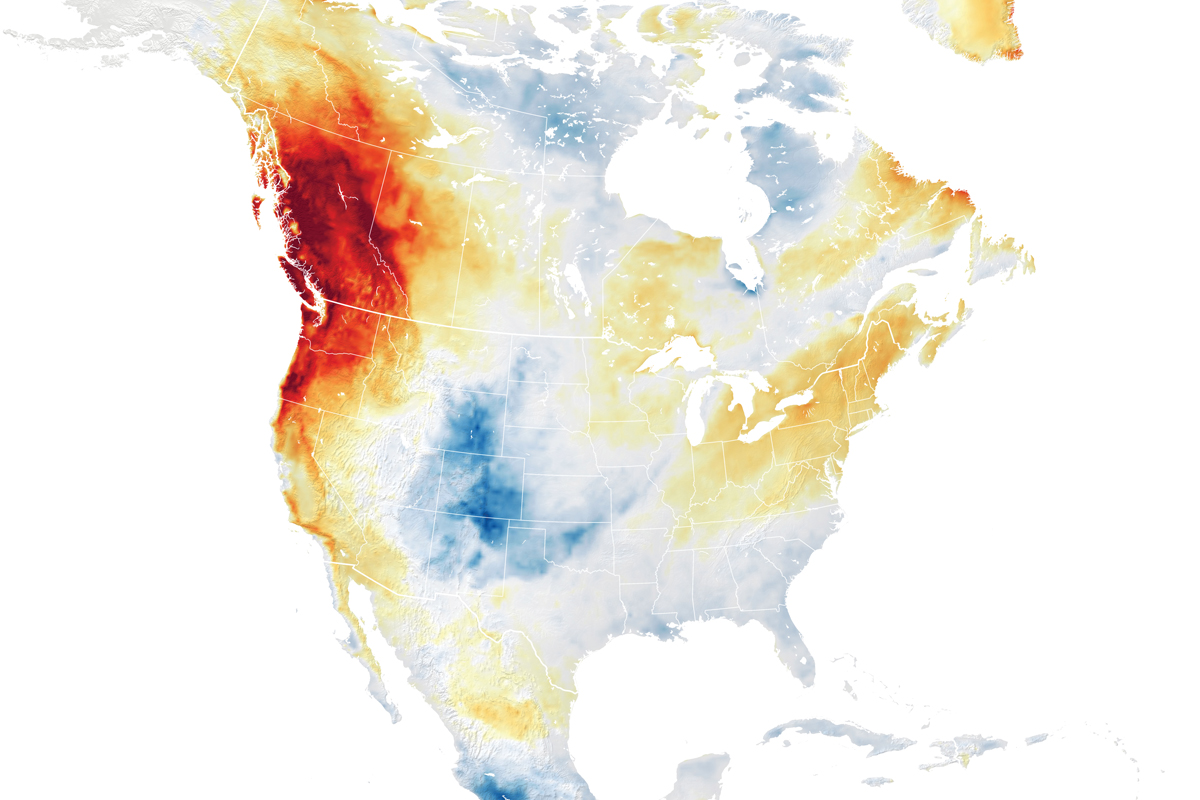Atmospheric rivers bring anomalously high temperatures
DOI: 10.1063/pt.ubik.ryhw

Temperatures on 27 June 2021 in the northwestern US and southwestern Canada were as much as 15 °C higher than the 2014–20 average for that time. An atmospheric river of warm, moist air contributed to the record-breaking temperatures. (Image by Joshua Stevens, NASA Earth Observatory.)

A few years ago, Juan Lora noticed persistent warm and rainy conditions during Connecticut winters. The professor of earth and planetary sciences at Yale University thought that atmospheric rivers may be the culprit. Found in the lower atmosphere, atmospheric rivers are narrow plumes concentrated with water vapor that start in the warm subtropics and move thousands of kilometers to midlatitude areas and polar regions. Roughly 6–10 are found in the atmosphere at any one time, and they can transport water in volumes similar to or larger than what rivers can on land.
Most study of atmospheric rivers has focused on their hydrologic effects, although some researchers have studied their thermodynamics at regional scales. Lora and graduate student Serena Scholz have now analyzed the temperature effects of atmospheric rivers at a global scale. They found that in various locations over periods of hours to months, atmospheric rivers raise surface temperatures several degrees above the climatological average.
Lora and Scholz analyzed the turbulent and radiative heat fluxes through the atmosphere in a 43-year-long dataset of space-based observations. They found that atmospheric rivers across North America and Eurasia were associated with average positive temperature anomalies of 5 °C. In polar regions during wintertime atmospheric-river events, the near-surface temperature anomalies climbed to 15 °C. On hourly time scales, the data indicate that the largest temperature anomalies in the midlatitudes are associated with storms that occur during atmospheric-river events.
The researchers have concluded that above-average temperatures in atmospheric rivers arise predominantly from the long-range transport of heat from the tropics. Water-vapor effects are a contributor too: When flows of warm, moist air meet at the surface, some of the warm air is forced to rise. As it does so, it releases heat when it encounters cold air and as the water changes phase to liquid. The researchers’ results show a local warming effect from the convergence of water vapor. Warming is fueled further by longwave radiation getting trapped near the surface by an atmospheric river’s clouds, in a transient, enhanced version of Earth’s greenhouse effect.
Scholz and Lora’s analysis focused on anomalies within the spatial bounds of atmospheric rivers. Some case studies, however—including research
This article was originally published online on 21 January 2025.
More about the Authors
Alex Lopatka. alopatka@aip.org

